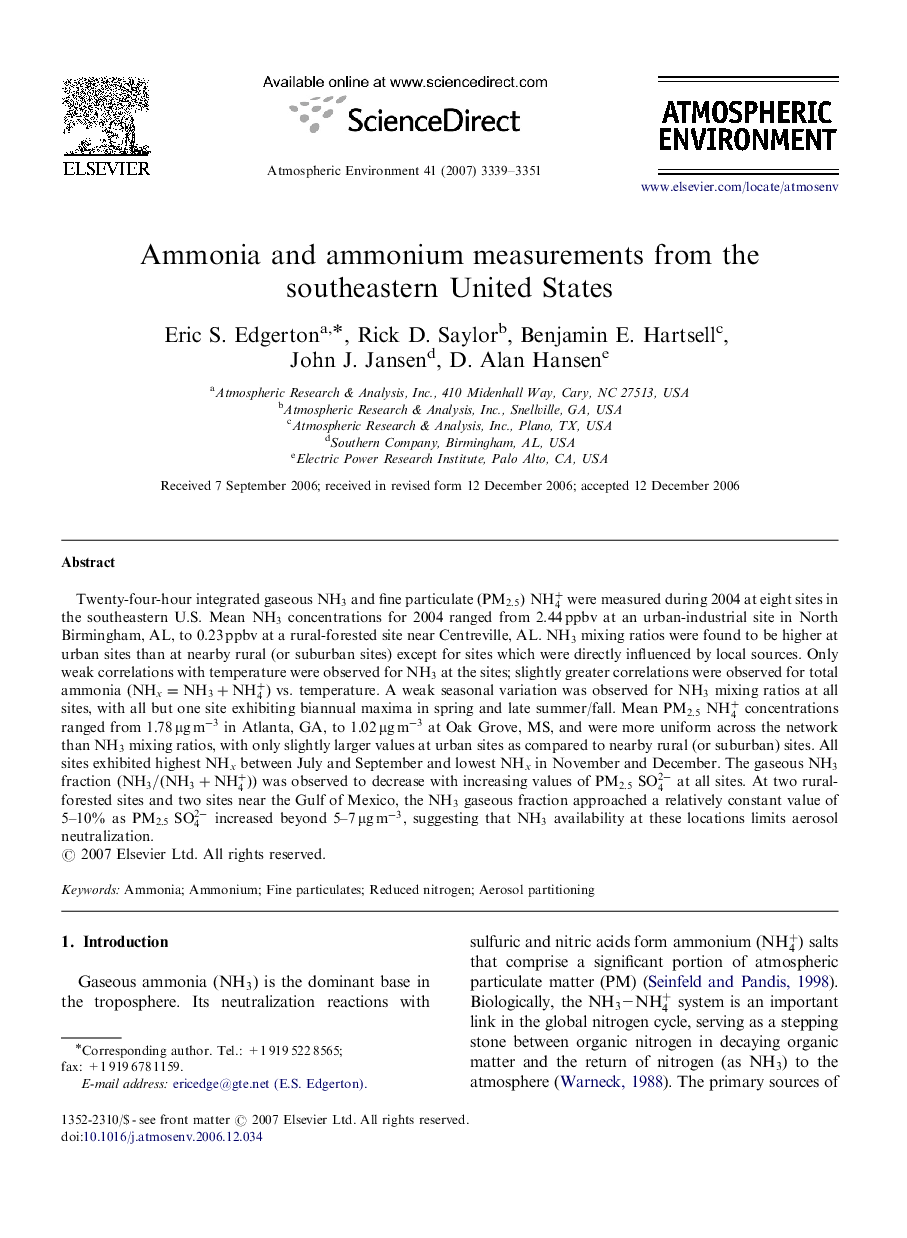| Article ID | Journal | Published Year | Pages | File Type |
|---|---|---|---|---|
| 4443715 | Atmospheric Environment | 2007 | 13 Pages |
Twenty-four-hour integrated gaseous NH3NH3 and fine particulate (PM2.5)NH4+ were measured during 2004 at eight sites in the southeastern U.S. Mean NH3NH3 concentrations for 2004 ranged from 2.44 ppbv at an urban-industrial site in North Birmingham, AL, to 0.23 ppbv at a rural-forested site near Centreville, AL. NH3NH3 mixing ratios were found to be higher at urban sites than at nearby rural (or suburban sites) except for sites which were directly influenced by local sources. Only weak correlations with temperature were observed for NH3NH3 at the sites; slightly greater correlations were observed for total ammonia (NHx=NH3+NH4+) vs. temperature. A weak seasonal variation was observed for NH3NH3 mixing ratios at all sites, with all but one site exhibiting biannual maxima in spring and late summer/fall. Mean PM2.5PM2.5NH4+ concentrations ranged from 1.78μgm-3 in Atlanta, GA, to 1.02μgm-3 at Oak Grove, MS, and were more uniform across the network than NH3NH3 mixing ratios, with only slightly larger values at urban sites as compared to nearby rural (or suburban) sites. All sites exhibited highest NHxNHx between July and September and lowest NHxNHx in November and December. The gaseous NH3NH3 fraction (NH3/(NH3+NH4+)) was observed to decrease with increasing values of PM2.5PM2.5SO42- at all sites. At two rural-forested sites and two sites near the Gulf of Mexico, the NH3NH3 gaseous fraction approached a relatively constant value of 5–10% as PM2.5SO42- increased beyond 5–7μgm-3, suggesting that NH3NH3 availability at these locations limits aerosol neutralization.
